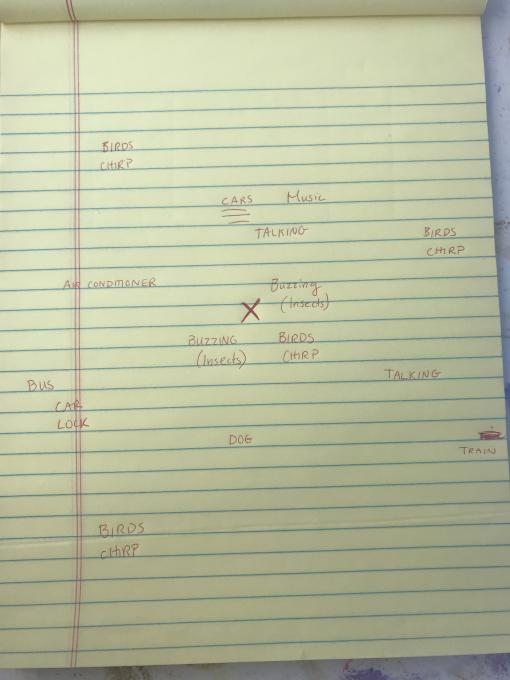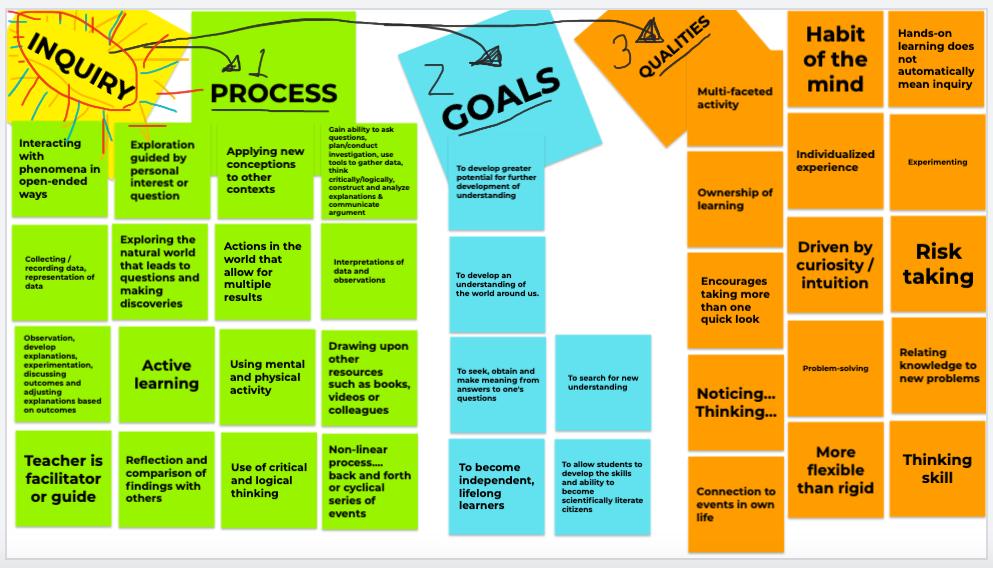Michelle
Forum Replies Created
Viewing 8 posts - 1 through 8 (of 8 total)
-
MichelleParticipantI have not used a specific citizen science project with my students. I have been hoping to use e-bird to help with our field survey around the school. Last year we received our materials (binoculars, etc.) but was unable to use them with the school closure. This year we are figuring out ways to adapt our field survey to fit the current state of our school, whether it be virtually or in-person. I think the biggest challenge is equity -- finding a project that allows all students to be involved regardless of the type of phone they have or their access to the internet.in reply to: Symbiosis in the Soil – Classroom Case Study #725514
-
MichelleParticipantMy school is 1-to-1 with Mac books. When having discussions as a whole group, it is great to be able to have easy access for all students to the internet. If we're having a conversation and someone brings up a question, it is easy to give students 5 minutes to open their computers to do some research on the topic. Then we can continue our discussion with the newly learned information that the students found. In the beginning of the year, I like to do simple activities to help students reflect on their abilities to observe well. Sometimes students forget about all of the different ways that they can take observations. I think allowing students to observe and wonder about things they are interested in is important. I always work to build a classroom culture where students use their downtime to explore and wonder -- For example, I have tons a magazines in my classroom -- I always encourage students to grab a magazine and just look at the pictures... no need to read (unless they want to) instead of going on their phones or computers.in reply to: Supporting Open-ended Questions #725511
-
MichelleParticipant
 I live in the city so my sound map has a lot of human produced noises. Sometimes it is heard to hear past the noisiness of the cars, buses, people and air-conditioners. When you do get past these, you can hear some of the natural aspects around you... such as insects buzzing and birds chirping from every direction.
I like how with an activity like this you can instruct your students to just be present. Even though we are listening, do not focus too intently on one direction of one sound. When we are able to do this, I feel as if I can hear more. It takes the ability to dismiss or fixate on a noise you think of as a "distraction". in reply to: Encouraging Observations #725508
I live in the city so my sound map has a lot of human produced noises. Sometimes it is heard to hear past the noisiness of the cars, buses, people and air-conditioners. When you do get past these, you can hear some of the natural aspects around you... such as insects buzzing and birds chirping from every direction.
I like how with an activity like this you can instruct your students to just be present. Even though we are listening, do not focus too intently on one direction of one sound. When we are able to do this, I feel as if I can hear more. It takes the ability to dismiss or fixate on a noise you think of as a "distraction". in reply to: Encouraging Observations #725508 -
MichelleParticipantIn the previous discussion post, I explained how I would like to use CS to frame the work globally and locally for students in my classroom. To begin, establishing a culture of respect in the classroom that will allow for effective communication and discussion in the classroom is a first step that must be taken in my highschool classroom. From here, students will be able to 1) investigate and share their findings in a respectful setting, 2) work in collaborative groups and 3) debate/discuss how their questions, findings and suggested practices can benefit the local and global community. I think working collaboratively and communicating with teachers, classmates, and other stakeholders are important practices for students to become familiar with and to become comfortable with. Then, students will be able to further their curiosity and investigations by learning about and responding to the opinions or findings of others.in reply to: Linking Citizen Science & Inquiry #719606
-
MichelleParticipantIn my high school biology class - I would like to model the practice “frame the work globally and locally.” Since I do not live in the immediate community of my school, it will take some time and research in order to figure out what would be the best application to the local environment. An idea that came to mind is, habitat destruction due to development or how development leads to an increase of travel in the immediate community -- and how these things can affect the environmental quality. To connect to the global aspect, we could use various current events to establish a connection between the student’s CS investigation to other areas in the globe. We do an environmental short film study throughout the year with the hope of exposing students to various things happening in the US and across the globe that we don't necessarily have time to fully explore throughout the school year. We have four main themes: species restoration, everything water, pollution and climate change. I think we could use the film study to make connections to a citizen science project. If students gain an understanding about how our environment is not a closed system, that everything is connected, can help students see the importance in caring about what is happening to your local environment and how it affects nearby environments as well as implications for environments around world.in reply to: Citizen Science in Your Classroom #719604
-
MichelleParticipantWe have not used any specific citizen science programs in our high school classroom. We had a plan for this spring to engage the students using eBird. We were able to obtain a class set of binoculars in order to do so. I believe the more the students can connect with the direct natural environment they live in is always beneficial. Our school district has urban-like areas that students live in and then completely wooded, secluded areas that students live in. Having them connect with their environment will allow them to care more about the state and wellbeing of their environment. Our plan for this year was to have students make a field guide of their school grounds that can be passed on from class to class each year. Overtime, we thought it would be interesting to see the changes that occur especially since we have new construction happening soon in our district. I think it would be a great addition to the project to find a citizen science program to go with each subgroup (invertebrates, plants/trees, birds, mammals) for the students to pursue.in reply to: Intro to Citizen Science #719585
-
MichelleParticipantI teach high school biology (PA Keystone Biology Standards). At the beginning of the school year we have a goal that focuses on designing and doing science investigations. For this goal, we do an activity called “Designing Investigations with PIll Bugs.” The students work in small groups and are given a group of 6-8 pill bugs. The activity falls under structured and guided inquiry. The students begin with structured inquiry because the question and procedure are given to them. The main goal of the activity is to allow students to practice the skills of observing, collecting data, categorizing and communicating by going through specific scenarios. To begin, the students are asked to simply observe the pill bugs, then they move into gathering specific observations (such as, how fast can a pill bug run?) Beyond these skills, we focus on guiding the students through a process of designing and carrying out an investigation based on which habitat the pill bugs like more. We give the students a set of options to pick from: Do pill bugs prefer… dark or light habitats, dark or light surfaces, sand or soil, warm or cold environments, fish food or apples? The students are now doing guided inquiry for the second part of their activity. I could modify the second part of the activity in a few different ways to allow the activity to be more of an open inquiry activity:
- I could simply ask the students to design an investigation to see what type of environment pill bugs prefer without giving them a set of questions to choose from.
- I could display the materials that are available for students to use. Then the students can decide what materials they would like to use to design their investigation.
in reply to: Inquiry in Your Classroom #719573 -
MichelleParticipantI believe inquiry can be explained by its process, qualities and outcome. I organized my concept map into three categories - Process, Goals and Qualities. Inquiry has distinct qualities and a distinct process that distinguishes it from only using hands-on learning, active learning or the linear teaching of the scientific method in the classroom. Inquiry involves observing, questioning, collecting data, interpreting data, constructing explanations, communicating, reflecting and revisiting ideas based on a genuine curiosity about a phenomenon in order to search for a new understanding or new knowledge. Allowing students the ability to embody this process enables them to use inquiry in their everyday lives with questions that may not even be “science-y” situations. For the "goals"section, I highlighted the outcomes that can come from being engaged in the process of inquiry that I saw within the text. Specifically in my classroom, I strive to have the inquiry process lead students to accomplish the following goals:
- Gain appreciation of beauty and wonder of science
- Ability to continue to learn about science outside of the classroom
- Develop skills to be successful in future science and non-science classrooms
- Develop 21st century skills (critical thinking, creativity, collaboration, communication, information/media/technology literacy, flexibility) to be successful in future classes and career
- Gain sufficient knowledge of science to engage in public discussion on related issues
- To become careful consumers of scientific and technological info related to their everyday lives
 in reply to: Intro to Inquiry #719565
in reply to: Intro to Inquiry #719565
Viewing 8 posts - 1 through 8 (of 8 total)
 I live in the city so my sound map has a lot of human produced noises. Sometimes it is heard to hear past the noisiness of the cars, buses, people and air-conditioners. When you do get past these, you can hear some of the natural aspects around you... such as insects buzzing and birds chirping from every direction.
I like how with an activity like this you can instruct your students to just be present. Even though we are listening, do not focus too intently on one direction of one sound. When we are able to do this, I feel as if I can hear more. It takes the ability to dismiss or fixate on a noise you think of as a "distraction".
I live in the city so my sound map has a lot of human produced noises. Sometimes it is heard to hear past the noisiness of the cars, buses, people and air-conditioners. When you do get past these, you can hear some of the natural aspects around you... such as insects buzzing and birds chirping from every direction.
I like how with an activity like this you can instruct your students to just be present. Even though we are listening, do not focus too intently on one direction of one sound. When we are able to do this, I feel as if I can hear more. It takes the ability to dismiss or fixate on a noise you think of as a "distraction". 